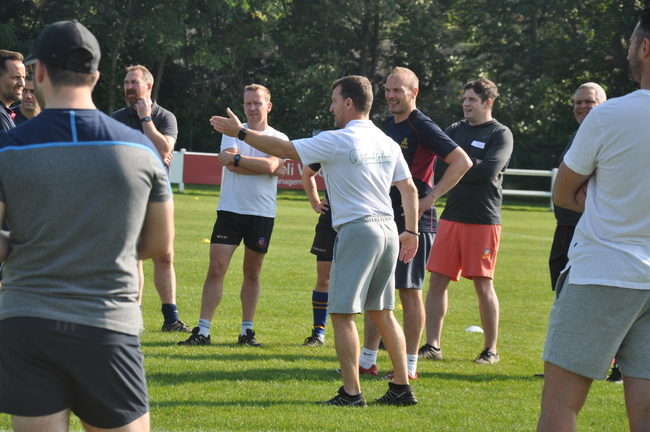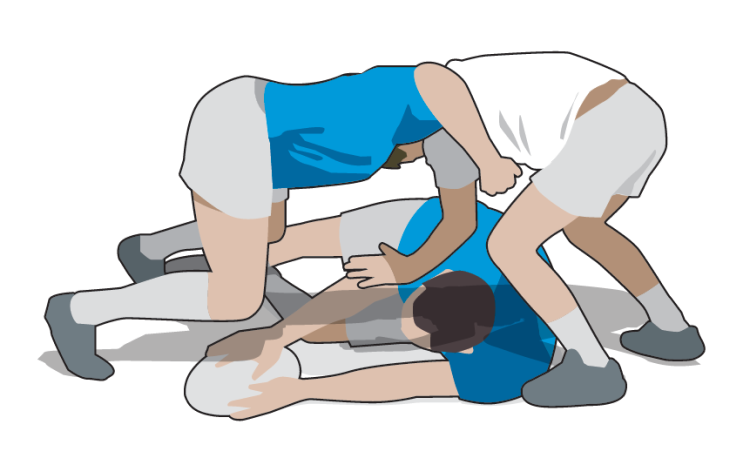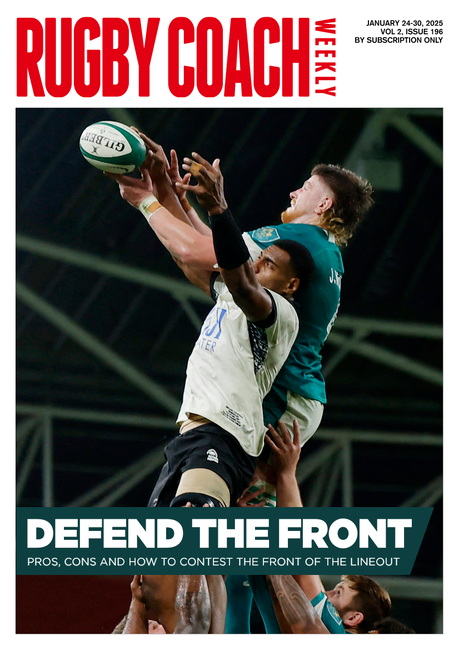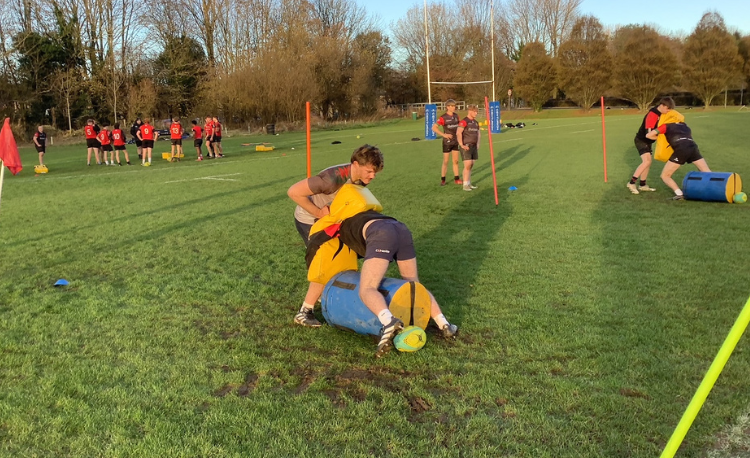Accelerate players' learning with games
A guide to creating activities to challenge and grow your players’ performance capabilities. By JON BATES, World Rugby trainer and head of Coach Centered.
We want to develop games and activities that involve information sources (or cues) and decisions that are present within the advanced form of rugby.
There are limitations in offering pre-determined solutions to game activities. Instead, we can design games and decision-making activities that enable learning to be scaffolded and layered.
We can provide a reflective space that promotes failure as a learning tool without fear of judgement and, through carefully constructed questions, draws understanding and insight from the player.
Reflect on the following questions:
- Do we understand the sources of information (cues) to which players are paying attention?
- Can we help them explore the rationale for making a particular decision?
- Can we encourage them to recognise and analyse the value of specific actions and behaviours?
As coaches, it is important to allow solutions to emerge within the games we design, ensuring feedback is less solution-delivering and directive, but delivered as an authentic outcome of the experience.
DESIGNING A GAME
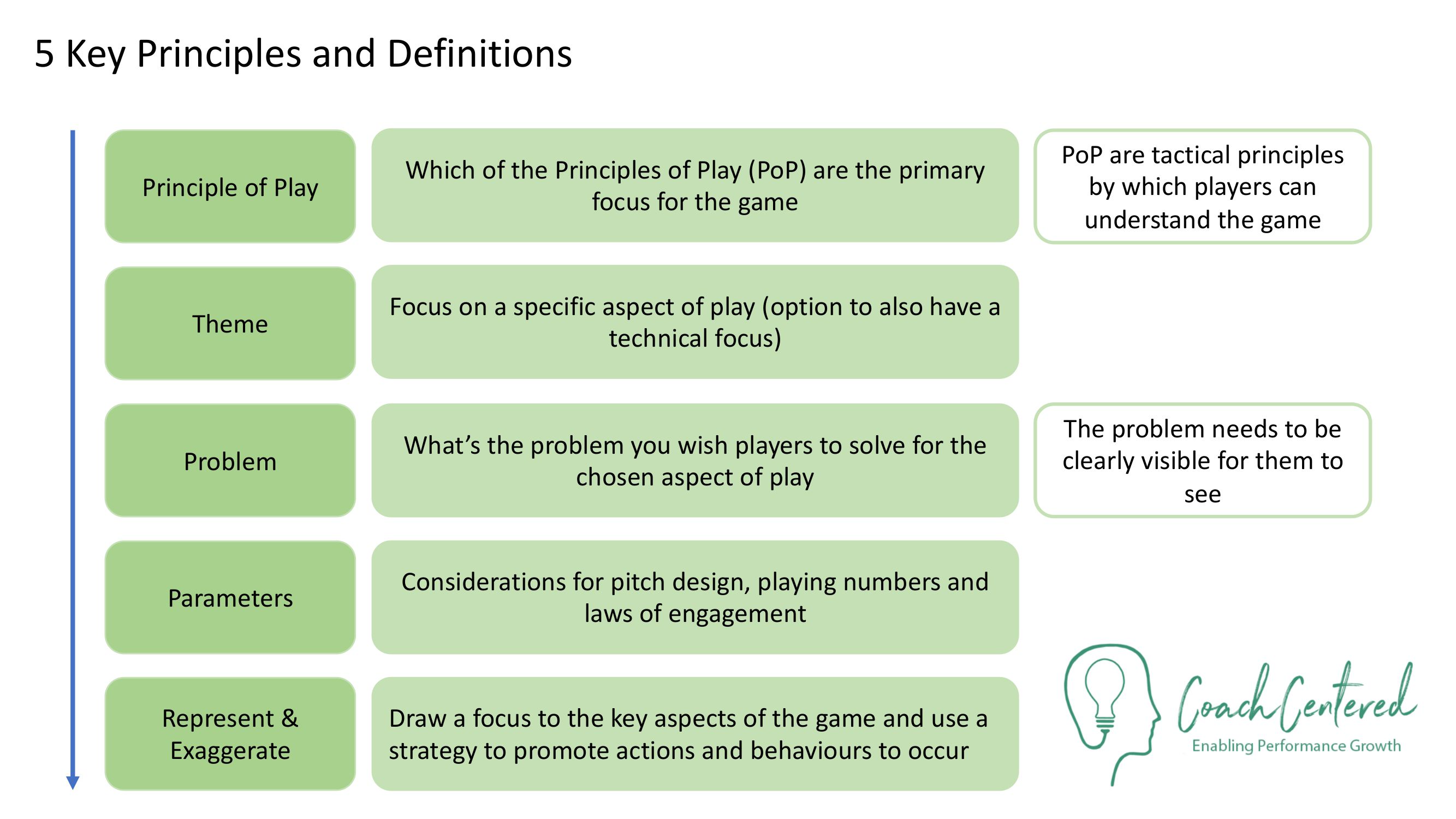
Through the application of game design principles, together with well-defined and timely coaching interventions, we can create a decision-rich environment for players that is so much more than just physical activity.
While a game might be designed to focus on specific aspects of play, there is an emergent nature to the coaching approach, where the behaviours and actions of players are unpredictable as they interpret the environment and respond creatively to the cues of the game.
This methodology can be emphasised further when an initial principle or theme isn’t present.
In such instances, the emergent technical and tactical needs of the players are likely to materialise and provide focus for development within the game.
As a model there are five key principles to consider as part of the game design process. Listed in the graphic below, they provide a logical approach to game design with clear features described for each.
Through the layering of game-design principles, the way in which we define the parameters is strongly influenced by the various components of pitch design, playing numbers and laws of the game.
To exaggerate core actions and behaviours within a game, we introduce a balance of constraints, conditions, rewards and non-negotiables - the latter being where a particular standard has been recognised and set as, for example, ‘the gold standard’.
The inclusion of such components promotes an implicit approach to game design, presenting players with the opportunity to acquire knowledge and understanding of skills in an indirect and often unconscious process.
With coaches not directly providing the solutions, players can become creative problem-solvers in their own right.
It is equally important to stress that using an implicit approach as a coaching methodology doesn’t mean leaving players to their own devices in what could be endless wasted hours of trial and error.
A PRACTICAL APPROACH
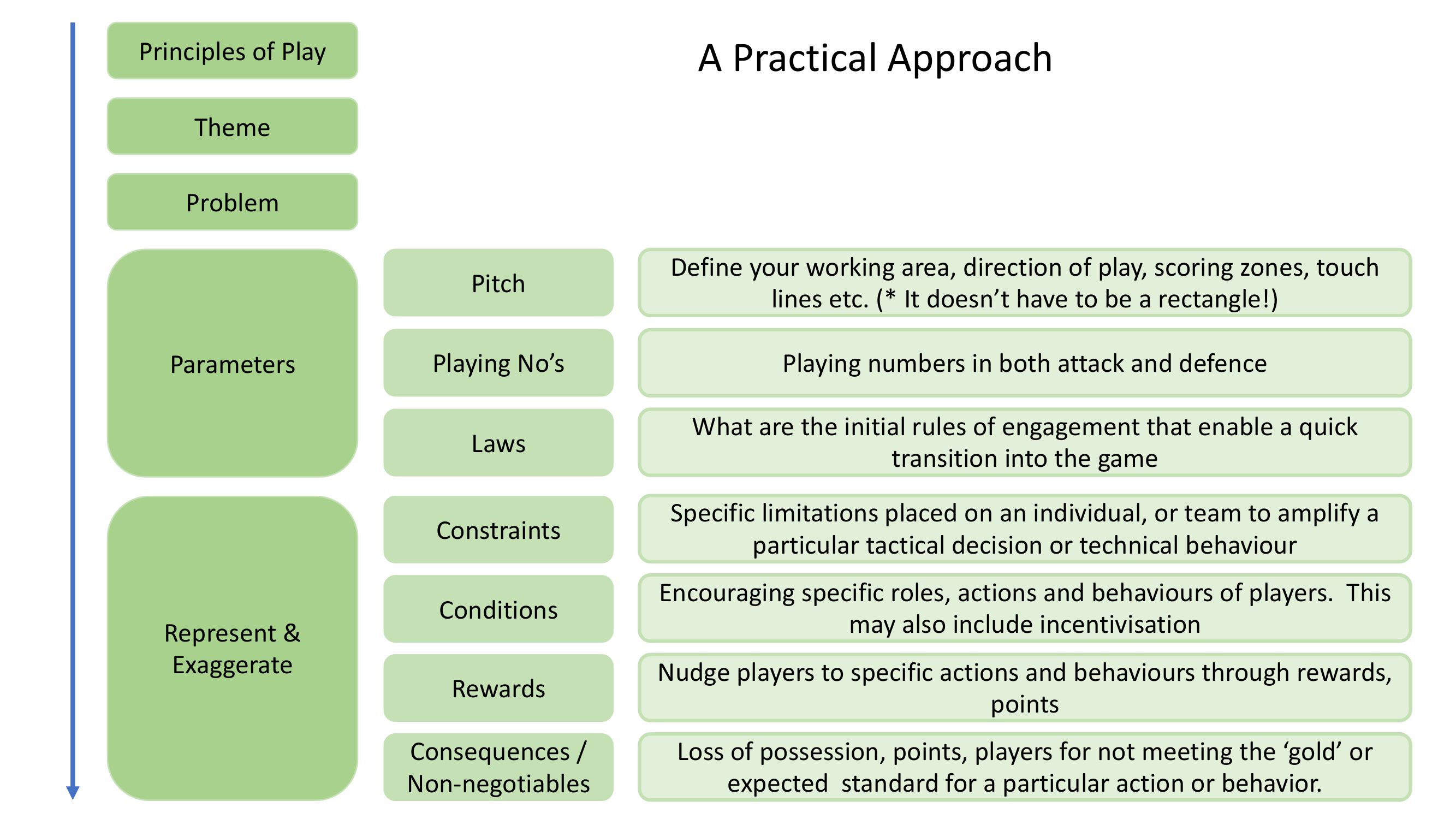
In the illustration, here is how that design might look for you.
As a rough rule of thumb, look for 70% success and 30% error. The 30% encourages players to experience mistakes, from which learning can be extracted and applied.
Make sure you allow your players the time to adjust to a new game form, understand the primary and secondary laws of the game and any conditions or constraints that might have been applied.
Be conscious of the cognitive load being placed on players at any given time - sometimes there can be too much information - as well as the impact of modifying a game to generate chaos prior to a level of order being restored.
As players make mistakes, we need to give them the time to solve the problem. This influences the timing and length of coach interventions, which should be minimal at the early stages of a game and at significant progression points.
Below is a game example:
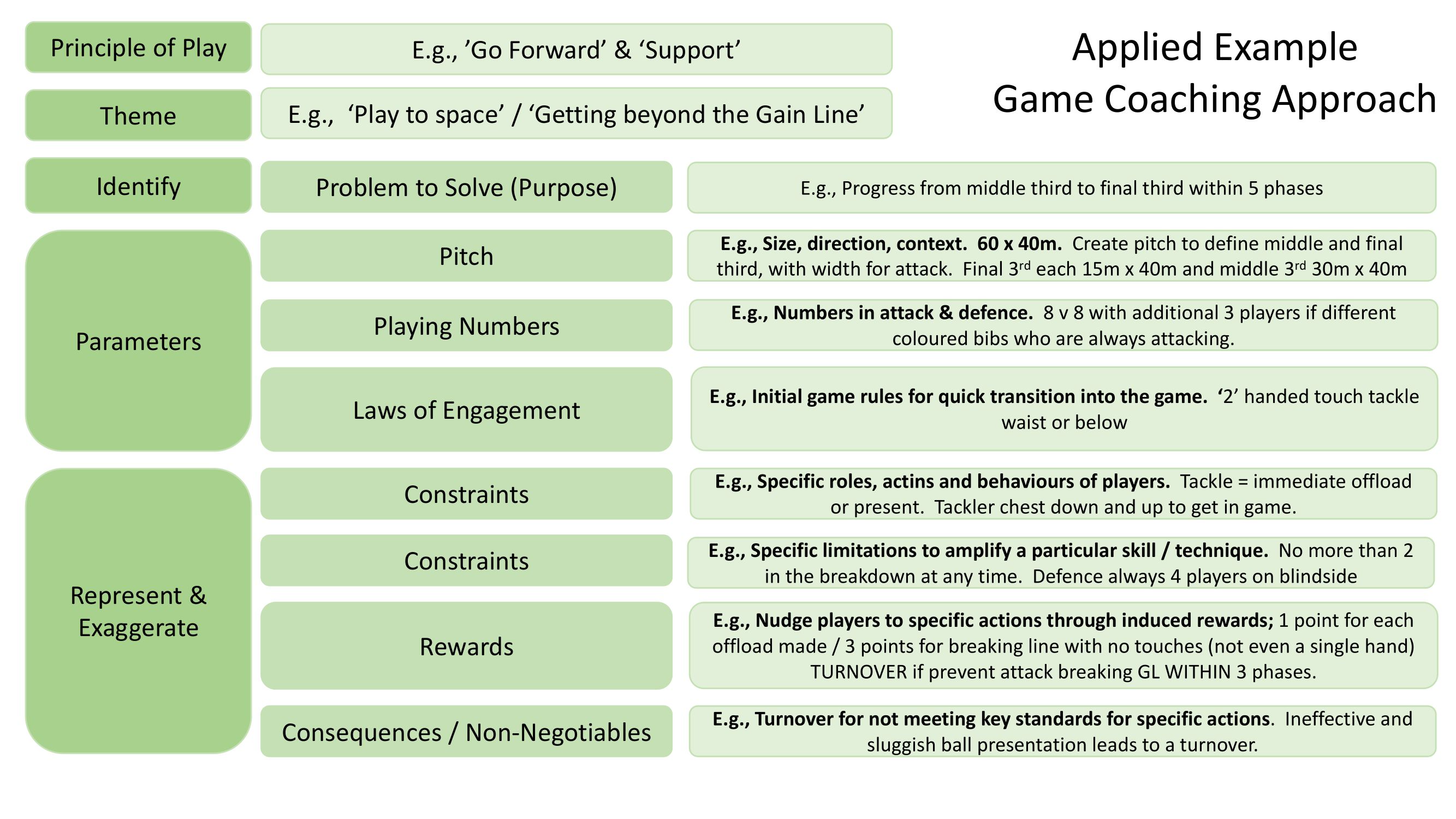
CONCLUSION
In summary, if a rugby match is framed as a series of problems encountered by players, then learning the game is about being a problem-solver.
Coaches need to design developmental experiences through games and decision-making activities as a way of creating problems.
Once the game is running, you are using your coaching craft to observe, draw attention to and facilitate players to finding the solutions.
SIX KEY TAKEAWAYS
1 To accelerate player learning, it is important to create a game that is relevant to their needs, and challenges their performance capabilities.
2 Design games and decision-making activities that enable learning to be scaffolded and layered, providing a reflective space that promotes failure as a learning tool.
3 Ensure feedback is less solutioning and directive but delivered as an authentic outcome of the experience.
4 Use a logical approach to game design with clear features described for each.
5 Look for a 70% success and 30% error rate to encourage players to experience mistakes and learn from them.
6 Frame rugby matches as a series of problems to be solved, using game design to create those problems and coaching craft to observe, draw attention to, and facilitate players to finding their solutions.
Interested in learning more about how Coach Centered can support the development of you, your coaching team, school or club?
If so, you can click here or get in contact by email enquiries@coachcentered.com to get insight into the varied programmes and bespoke opportunities we offer and how we accelerate your learning.
Alternatively, click the links below to learn about Coach Centered’s:
Related Files
Newsletter Sign Up
Coaches Testimonials

Gerald Kearney, Downtown Las Vegas Soccer Club

Paul Butler, Florida, USA

Rick Shields, Springboro, USA

Tony Green, Pierrefonds Titans, Quebec, Canada
Subscribe Today
Be a more effective, more successful rugby coach
In a recent survey 89% of subscribers said Rugby Coach Weekly makes them more confident, 91% said Rugby Coach Weekly makes them a more effective coach and 93% said Rugby Coach Weekly makes them more inspired.
Get Weekly Inspiration
All the latest techniques and approaches
Rugby Coach Weekly offers proven and easy to use rugby drills, coaching sessions, practice plans, small-sided games, warm-ups, training tips and advice.
We've been at the cutting edge of rugby coaching since we launched in 2005, creating resources for the grassroots youth coach, following best practice from around the world and insights from the professional game.
